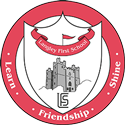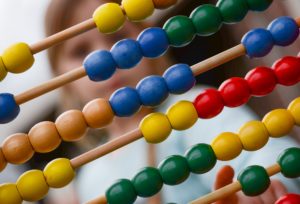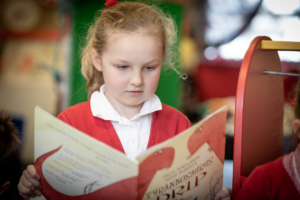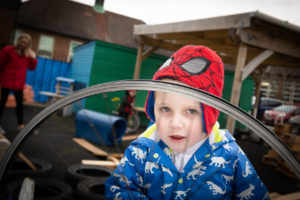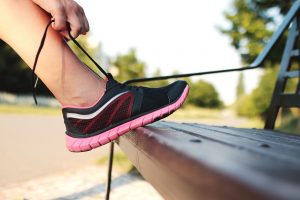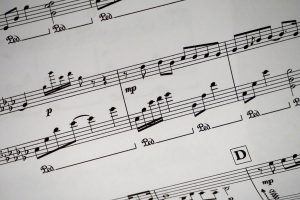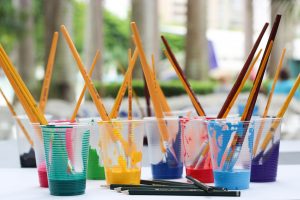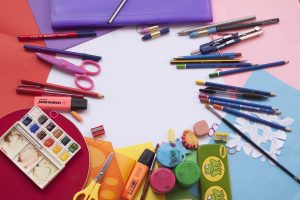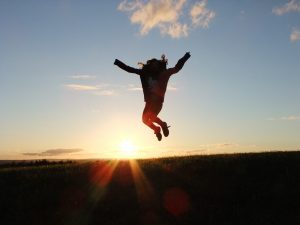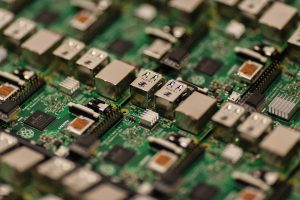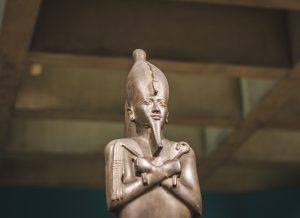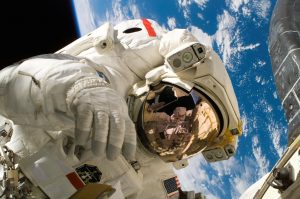Design Technology
Purpose of study
Design and technology is an inspiring, rigorous and practical subject. Using creativity and imagination, pupils design and make products that solve real and relevant problems within a variety of contexts, considering their own and others’ needs, wants and values. They acquire a broad range of subject knowledge and draw on disciplines such as mathematics, science, engineering, computing and art. Pupils learn how to take risks, becoming resourceful, innovative, enterprising and capable citizens. Through the evaluation of past and present design and technology, they develop a critical understanding of its impact on daily life and the wider world. High-quality design and technology education makes an essential contribution to the creativity, culture, wealth and well-being of the nation.
Aims
The national curriculum for design and technology aims to ensure that all pupils:
- develop the creative, technical and practical expertise needed to perform everyday tasks confidently and to participate successfully in an increasingly technological world
- build and apply a repertoire of knowledge, understanding and skills in order to design and make high-quality prototypes and products for a wide range of users
- critique, evaluate and test their ideas and products and the work of others
- understand and apply the principles of nutrition and learn how to cook
| Prior learning Nursery | Prior learning Reception | Year 1 | Year 2 | Year 3 | Year 4 | ||
|---|---|---|---|---|---|---|---|
| DESIGN KS1 When designing and making, pupils should be taught to: Design *design purposeful, functional, appealing products for themselves and other users based on design criteria *generate, develop, model and communicate their ideas through talking, drawing, templates, mock-ups and, where appropriate, information and communication technology KS2 When designing and making, pupils should be taught to: Design *use research and develop design criteria to inform the design of innovative, functional, appealing products that are fit for purpose, aimed at particular individuals or groups *generate, develop, model and communicate their ideas through discussion, annotated sketches, cross-sectional and exploded diagrams, prototypes, pattern pieces and computer-aided design | I can hold a chunky crayon, pencil, pen or paint brush and makes lines that go across, up and down or round and round. (PRIME) | Develop own ideas through selecting and using materials and working on processes of interest. (Exceeding) | To describe how something works. | KPI: To design purposeful, functional, appealing products for himself/herself and other users based on design criteria. | KPI: To create designs using annotated sketches, cross sectional diagrams and simple computer programmes. | KPI: To use knowledge of existing products to design a functional and appealing product for a particular purpose and audience. | |
| To talk with others about how they want to construct a product. | KPI: To generate, develop, model and communicate his/her ideas through talking, drawing, templates, mock-ups and, where appropriate, information and communication technology. | To show that own designs meet a range of requirements. | KPI: To create designs using exploded diagrams. | ||||
| To think of ideas and plan what to do next. | To put together step-by-step plan which shows the order and also what equipment and tools they need. | To take account of the ideas of others when designing. | |||||
| To write a set of simple design criteria. | To produce a plan and explain it to others. | ||||||
| To think about what to do to present a product in an interesting way. | |||||||
| MAKE KS1 Make *select from and use a range of tools and equipment to perform practical tasks [for example, cutting, shaping, joining and finishing] *select from and use a wide range of materials and components, including construction materials, textiles and ingredients, according to their characteristics KS2 Make *select from and use a wider range of tools and equipment to perform practical tasks [for example, cutting, shaping, joining and finishing], accurately *select from use a wider range of materials and components, including construction materials, textiles and ingredients, according to their functional properties and aesthetic qualities | Know that tools like scissors, spoons and hammers can be used to do different things. | Show and talk about using things like scissors, hammers and saws safely. (PRIME) | KPI: To select from and use a range of tools and equipment to perform practical tasks e.g. cutting, shaping, joining and finishing. | KPI: To choose appropriate tools, equipment, techniques and materials from a wide range. | To make a product which uses both electrical and mechanical components. | To continue to work on own product even though the original idea might not have worked. | |
| Use all sorts of building toys and empty cardboard boxes to make things. | Use different things like scissors, paintbrushes, pens, hammers or bricks to make things. (PRIME) | KPI: To use a range of simple tools to cut, join and combine materials and components safely. | KPI: To safely measure, mark out, cut and shape materials and components using a range of tools. | KPI: To safely measure, mark out, cut, assemble and join with some accuracy. | To produce sample parts of a design to evaluate and improve. | ||
| Understand the importance of being careful when using children’s scissors to snip or a knife to spread jam. | Use different things like scissors, masking tape, sticky tape, hole punches and string to join and fix things together. | To measure materials to use in a model or structure. | To work accurately to make cuts and holes. | To continue to work on own product even though the original idea might not have worked. | |||
| Handle equipment and tools effectively, (ELG To join things (materials/ components) together in different ways. | KPI: To make suitable choices from a wider range of tools and unfamiliar materials and plan out the main stages of using them. |
| | ||||
| EVALUATE KS1 Evaluate *explore and evaluate a range of existing products *evaluate their ideas and products against design criteria KS2 Evaluate *investigate and analyse a range of existing products *evaluate their ideas and products against their own design criteria and consider the views of others to improve their work *understand how key events and individuals in design and technology have helped shape the world | Talk about the ideas and processes which have led to designs, images or products. .(Exceeding) | KPI: To ask simple questions about existing products and those that he/she has made. | To evaluate a product against design criteria. | KPI: To investigate and analyse existing products and those he/she has made, considering a wide range of factors. | To evaluate own product, thinking of both appearance and the way it works. | ||
| Talk about features of own and others’ work, recognising the differences between them and the strengths of others. (Exceeding) | KPI: To evaluate and assess existing products and those that he/she has made using a design criteria. | To make sure that a product looks attractive. | To produce sample parts of a design to evaluate and improve. | ||||
| To explain what went well with own work. | KPI: To consider how existing products and his/her own finished products might be improved and how well they meet the needs of the intended user. | ||||||
| To evaluate an existing product suggesting improvements. | To know how key events/ individuals’ designs have shaped the world. | ||||||
| TECHNICAL KNOWLEDGE KS1 Technical knowledge *build structures, exploring how they can be made stronger, stiffer and more stable *explore and use mechanisms [for example, levers, sliders, wheels and axles] in their products KS2 Technical knowledge *apply their understanding of how to strengthen, stiffen and reinforce more complex structures *understand and use mechanical systems in their products [for example, gears, pulleys, cams, levers and linkages] *understand and use electrical systems in their products [for example, series circuits incorporating switches, bulbs, buzzers and motors] *apply their understanding of computing to program, monitor and control their products | Make lines and piles of blocks, joining the pieces together to make things. | Through explorations, find out and make decisions about how media and materials can be combined and changed. (Exceeding) | To make a model stronger by altering shape and structure. | KPI: To investigate different techniques for stiffening a variety of materials and explore different methods of enabling structures to remain stable. | To make a product which uses both electrical and mechanical components. | KPI: To apply techniques he/she has learnt to strengthen structures and explore his/her own ideas. | |
| KPI: To make a product which moves using wheels and axles. | To choose suitable techniques to strengthen a product. | ||||||
| Prior learning Nursery | Prior learning Reception | Year 1 | Year 2 | Year 3 | Year 4 | ||
| FOOD | Hold a spoon to pick up food and put it into mouth to self feed. (PRIME) | Like to eat different types of fruit and vegetables. (PRIME) | KPI: To say where some food comes from and give examples of food that is grown. | KPI: To understand that all food has to be farmed, grown or caught. | KPI: To use a variety of ingredients and techniques to prepare and combine ingredients safely. | KPI: To understand seasonality and the advantages of eating seasonal and locally produced food. | |
| Able to wash and dry own hands. (PRIME) | Talk about different ways of keeping healthy, like washing hands before eating food, having a drink of water when thirsty, eating fruit or vegetables and running or jumping. (PRIME) | To cut food safely. | To evaluate a diet and say whether it is healthy and varied and suggest improvements. | KPI: To read and follow recipes which involve several processes, skills and techniques. | |||
| Hold a small jug and pour own drink. (PRIME) | Know the importance for good health of physical exercise, and a healthy diet and talk about ways to keep healthy and safe. (ELG,PRIME) | KPI: To understand the need for a variety of food in a diet. | To explain the origin of a variety of ingredients. | ||||
| Understand the importance of being careful when using children’s scissors to snip or a knife to spread jam. | Manage own basic hygiene and personal needs successfully (ELG,PRIME) | To prepare a healthy food product. | KPI: To understand what makes a healthy balanced diet, and that different foods and drinks provide different substances the body needs to be healthy and active. | ||||
| Know about, and can make healthy choices in relation to, healthy eating and exercise. ( ELG, PRIME) | To know what to do to be hygienic and safe, when preparing food. | ||||||
| TOPICS | TOPIC- Pirates Context- A healthy soup for a pirate Project: Food ASPECT OF DT: FOCUS: Healthy Food | TOPIC- Titanic Context: A dessert for a First Class Cruise ship Project: Food . ASPECT OF DT: Food FOCUS: Healthy food | TOPIC- Context: Project: Healthy eating recipe: (coleslaw? dips/dippers? smoothies?) ASPECT OF DT: Food FOCUS: Healthy and varied diet | TOPIC- Fairtrade Context: Fairtrade afternoon tea Project: A healthy sandwich ASPECT OF DT: Food FOCUS: Healthy and varied diet Techniques: Cutting (claw and bridge techniques), grating, rolling, spreading |
|||
| Prior learning Nursery | Prior learning Reception | Year 1 | Year 2 | Year 3 | Year 4 | ||
| S Y S T E M S | Electrical and Mechanical | Make toys move or the sound or picture images on toys work by pressing switches or touching the screen. | To make a product which uses both electrical and mechanical components. | KPI: To understand and use electrical systems in products | |||
| Mechanisms | Make toys, such as a wind up toy, move. | KPI: To make a product which moves using wheels and axles. | KPI: To explore and use mechanisms e.g. levers, sliders, wheels and axles, in his/her products. | To use knowledge of transference of forces to choose appropriate mechanisms for a product (eg levers, winding mechanisms, pulleys and gears). | |||
| TOPICS | TOPIC- Fairy Tales Context- Making a house for the three little pigs Project: Making Houses/castles ASPECT OF DT: Structures TOPIC- Animals Project: Animal pop up toys and peg animals ASPECT OF DT: Mechanisms FOCUS: Leavers and Linkages | TOPIC- Superheroes Context: Designing a cape. Project: Making a Cape ASPECT OF DT: Textiles FOCUS: Testing materials TOPIC- Transport Context: Design a moving car Project: Create a Car ASPECT OF DT: Mechanisms FOCUS: Wheels and Axles | TOPIC- Context: Project: Magnetic board game ASPECT OF DT: Structures FOCUS: 2D to 3D object TOPIC- Christmas Context: A moving Christmas Card Project:Greetings card (Christmas themed) ASPECT OF DT: Mechanical systems. FOCUS: Levers and linkages | TOPIC- Christmas Context: A festive decoration Project: Felt Christmas decorations ASPECT OF DT: Textiles FOCUS: Templates and joining techniques TOPIC- Rainforest/ Local history Context: Project: Night light ASPECT OF DT: Electrical systems FOCUS: Simple programming and control |
Spiritual
D.T supports spiritual development by allowing pupils the opportunity to exercise imagination, inspiration, intuition and insight through creativity and risk taking in analysing, designing and manufacturing a range of products. It instils a sense of awe, wonder and mystery when studying the natural world or human achievement. Encouraging creativity allows pupils to express innermost thoughts and feelings and to reflect and learn from reflection, for example, asking ‘why?’, ‘how?’ and ‘where?’.
Moral
D.T supports moral development by raising awareness of the moral dilemmas by encouraging pupils to value the environment and its natural resources and to consider the environmental impact of everyday products. It educates pupils to become responsible consumers.
Social
D.T Supports social development by providing opportunities to work as a team, recognising others’ strengths and sharing equipment. Design Technology promotes equality of opportunity and provides an awareness of areas that have gender issues e.g. encouraging girls to use equipment that has been traditionally male dominated.
Cultural
D.T supports cultural development by encouraging children to reflect on ingenious products and inventions, the diversity of materials and ways in which design technology can improve the quality of life. It investigates how different cultures have contributed to technology and reflects on products and inventions, the diversity of materials and ways in which design can improve the quality of our lives.
